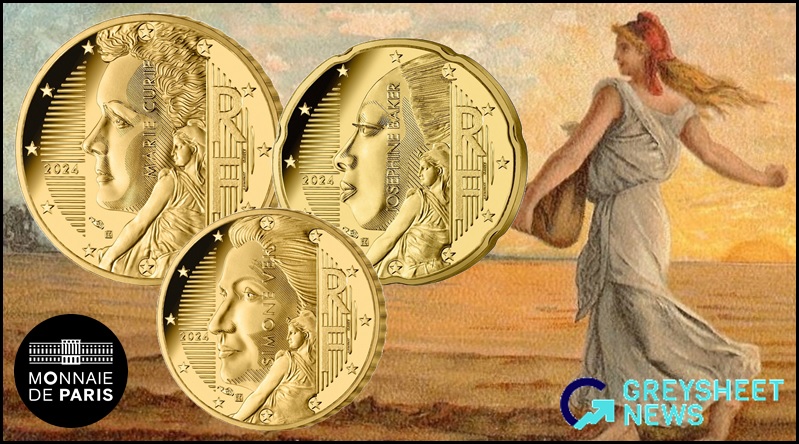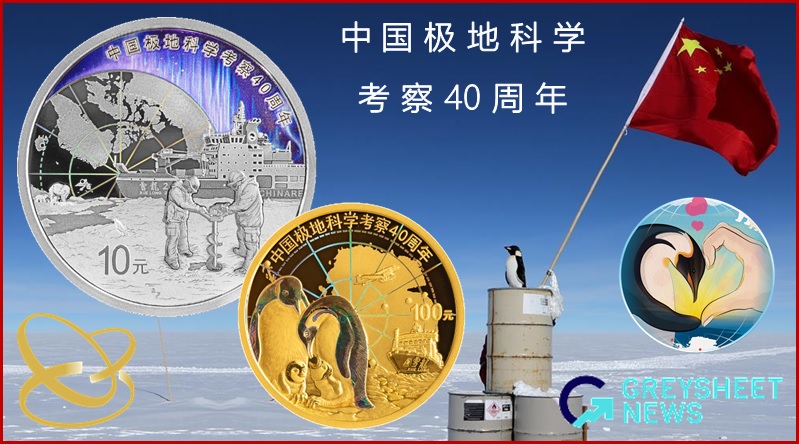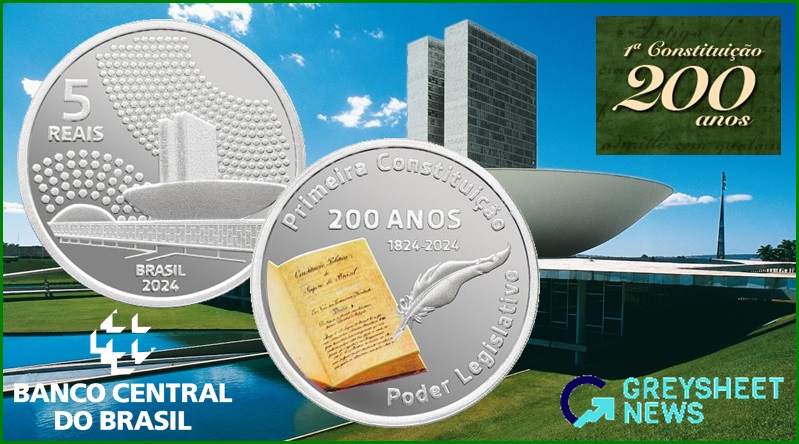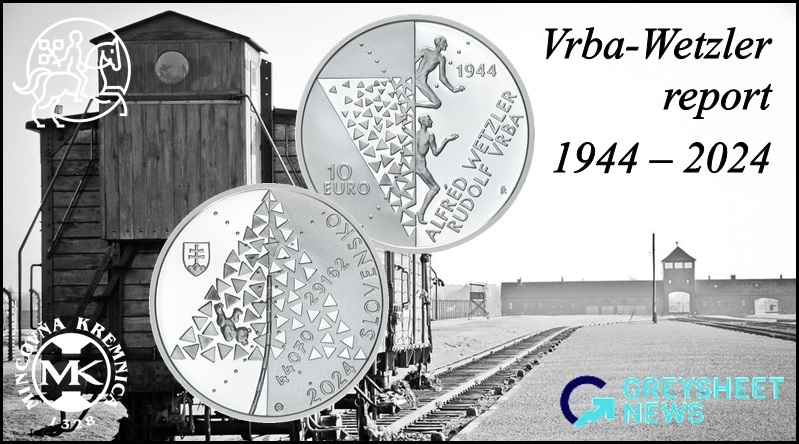France: Amended Circulation Euro-Cents Designs Featuring Prominent French Women are Officially Released
The Monnaie de Paris have released three new circulation type coins with an amended design that will enter circulation from the 7th March 2024.
A previous announcement indicated that from the early part of 2024 there will be new faces on the national sides of France's 10, 20 and 50 Euro-cent coins. These denominations will feature the profiles of three exceptional French women - Marie Curie – 50 Euro-cents, Josephine Baker – 20 Euro-cents and Simone Veil – 10 Euro-cents, all of whom are buried in the Panthéon in Paris. In late 2023, this announcement was made by the Monnaie de Paris, who accompanied the information with images of the new designs created by senior engraver Joaquin Jimenez. Production of the coins began towards the last months of 2023, however, the designs which were not officially approved by the European Comission, a necessity before coins can be produced or released, were later rejected. The reason was due to the Commission’s criticism that the twelve stars which surround the designs and which are a requisite on all Euro-denominated coins were obstructed by the designs. By the time the European Commission advised the Monnaie de Paris they had rejected the designs, more than 27 million coins had been minted in time for their distribution in the early weeks in 2024. Within 72 hours, the Monnaie de Paris had proposed amended designs to the European Commission with clear illustrations of the stars which did meet with the Commission’s approval. However, officials at the Monnaie de Paris were also advised that the coins minted without the amended design could not be released. Thus, the Monnaie de Paris were forced to destroy all 27 million coins with the stars error – equating to less than 2% of its annual production of 1.4 billion coins in 2023.
As the Monnaie de Paris is an organisation entirely financed by its own activities, no additional costs will be incurred for the State. The Mint indicated that one hundred percent of the 27 million coins will be recycled to produce new coins in 2024 and the price paid by the French Treasury to the Monnaie de Paris to produce the coins remains exactly the same as initially budgeted.
Each design features a stylised left-facing profile of the featured woman along with a representation of the Sower superimposed over the lower right portion of each portrait. Over each profile is the name of the woman featured and is shown in vertical text direction. The initials RF – representing REPUBLIQUE FRAICAISE is placed to the right of the Sower in front of a field of vertical lines. To the left of each profile, is a field of horizontal lines along with the year of issue, 2024. Surrounding the primary design is a circle of twelve five-pointed stars which represent the original twelve members of the European Union.
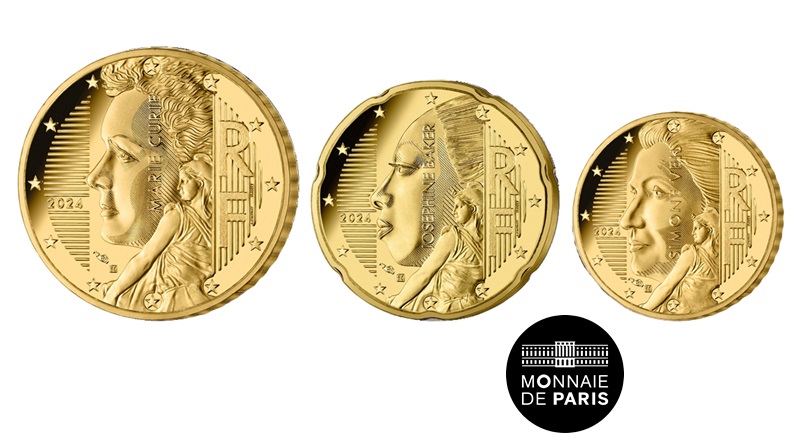
50 Euro-cents, Marie Curie. Born as Maria Skłodowska in Warsaw in November 1867, she became a physicist whose research about radioactivity made her name internationally renowned and a recipient of the Nobel Prize twice in her life. Remembered as the first woman to win a Nobel Prize, she remains the only woman to have won the award in two different fields. The first award was in 1903 with Henri Becquerel and her husband, Pierre Curie, when she was awarded the Nobel Prize for Physics. She was the sole winner of the 1911 Nobel Prize for Chemistry. In May 1906, with the sudden death of her husband the month before, Marie was appointed to the professorship that had been left vacant on her husband’s death and became the first woman to teach in the Sorbonne. In 1921, accompanied by her two daughters, Marie Curie made a triumphant journey to the United States, where US President Warren G. Harding presented her with a gram of radium bought as the result of a funding collection among American women.
20 Euro-cents, Josephine Baker. Born as Freda Josephine McDonald in St. Louis, Missouri in June 1906 and from an impoverished background, her career in entertainment began when she was just thirteen. Believing in her talents as an entertainer, she mustered up the courage and travelled to New York as part of a dance troop. By 1925 she went to Paris to dance at the Théâtre des Champs-Élysées in La Revue Nègre and introduced her danse sauvage to France. She went on to become one of the most popular music-hall entertainers in France and achieved star billing at the Folies-Bergère. Making the decision to remain in France, Baker became a French citizen in 1937. At this time, Baker broke into singing and even made her screen debut as a singer four years later in Zouzou. She appeared in several more films before World War II curtailed her career. As part of the Free French forces during the Nazi occupation of France, Baker was later awarded the Croix de Guerre and the Legion of Honour with the rosette of the Résistance.
10 Euro-cents, Simone Veil. Born as Simone Jacob in July 1927 to a Jewish family in Nice, she was the youngest of four siblings. With the outbreak of war in 1940, The Jacob family were eventually deported at the beginning of 1944, her father and brother were never heard from again but Simone, her mother and sisters were eventually liberated from the concentration camps by allied forces in April 1945. Simone was able to return to her studies and in 1946, she married Antoine Veil while at the same time studying law. She entered public service, holding a senior position in which she was made responsible for judicial affairs. In this capacity, Veil was able to improve women's prison conditions and the treatment of incarcerated women. In 1964, she left this post to become the director of civil affairs, where she improved French women's general rights and status. Veil’s career would see her being appointed as Health Minister in several governments as well as becoming President of the European Parliament from 1979 to 1982, the first woman to hold that office.
The new circulation-type designs replace the earlier series in use from 1999 featuring a modern interpretation of Oscar Roty’s classical design entitled ‘The Sower’ introduced onto French silver coinage in 1898. For additional information on French collector and circulation coinage, please visit the website of the Monnaie de Paris.

Download the Greysheet app for access to pricing, news, events and your subscriptions.
Subscribe Now.
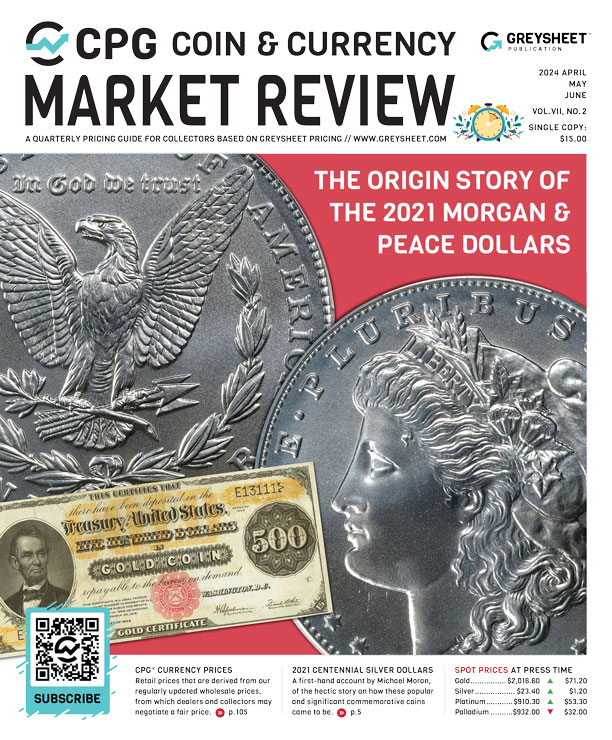
Subscribe to CPG© Coin & Currency Market Review for the industry's most respected pricing and to read more articles just like this.
Author: Michael Alexander


